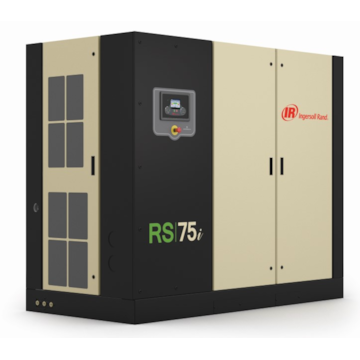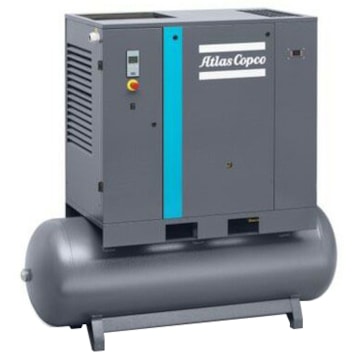A Closer Look at Rotary Screw Air Compressors
Rotary screw air compressors are one of the most popular choices of industrial air compressors. Our team believes it's critical to have at least a baseline understanding of them if you're searching for the right tool to fit your application.
These compressors remain one of the most popular choices for industrial air compressors. They are more commonly known as positive displacement compressors, serving as an excellent choice for industrial applications.
Let's take a closer look at some of the advantages and disadvantages offered by rotary screw compressors.
The basics: rotary screw air compressors
Rotary air screw compressors deliver power through the use of two rotors or helical screws to compress air. The shape of these rotos are unique, designed to turn in opposite directions and trap input air between incredibly tight spaces to compress it. In contrast to other compressors, these models typically can't generate more than 50 horsepower.
The two types of rotary screws are lubricated and oil-free rotary screw air compressors. Between them, the lubricated option is preferred most often because it's relatively cheaper. Oil-free compressors are used only when the compressed air must be free of any potential oil condensate.
Advantages
Similar to reciprocating compressors, the rotary screw air compressor also features a simple design. It has a relatively cost-efficient upfront cost in addition to low maintenance expenses. In addition, it offers an easier intallation design that features few moving parts to increase efficiency.
Engineers have also pushed reliability forward as a priority, introducing manual controls and system regulators that can assure owners of top efficiency regardless of the needed output level.
Disadvantages
While rotary screw air compressors come with their fair share of advantages, they are not without flaws depending on your application. That includes a limited airend life, which could be roughly 20,000 hours of operation on the lower end. Some brands promise higher airends of more than 50,000 hours on the machines, making it incredibly important to do research ahead of your purchase and ensure the tool fits your needs.
For context: If your machine has a failed airend it is no longer field serviceable and must be taken back to a service shop to be completely rebuilt. In addition to logistical troubleshooting here, this can cause serious downtime for your business if there's no backup air compressor in place that is ready to takeover.
When are rotary air screw compressors the right fit?
Taking into account both the advantages and drawbacks of these tools, the best fit is for applications with a requirement of 15 horsepower or above. Buyers should also plan to avoid installing them in harsh or extreme environments.
A few other variables to take into consideration — maintenance and lubrication preferences.
Have any lingering questions? Contact one of our experienced air compressor experts by calling 866-778-6572 or email us through info@compressorworld.com



















